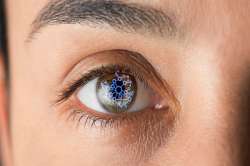Eye test to detect Alzheimer’s Disease? Look what research has to say
New eye test detects presence of beta-amyloid which is a hallmark of Alzheimer's disease.

Scientists have succeeded to develop a non-invasive imaging test that could allow an early detection of Alzheimer’s disease. The technology was developed by Cedars-Sinai Medical Center and Neurovision company in the US. It scans the retina using techniques which can identify beta-amyloid protein deposits, which is a hallmark of Alzheimer’s. Accumulation of neurotoxic beta-amyloid protein can be detected with positron emission tomography or PET scan and analysis of cerebrospinal fluid. But these are invasive, inconvenient and costly, which makes them impractical for routine screening and follow-up evaluation.
“This is the first study demonstrating the potential to image and quantify retinal findings related to beta-amyloid plaques noninvasively in living patients using a retinal scan with high resolution,” said Maya Koronyo-Hamaoui, a research scientist at Cedars-Sinai. “Findings from this study strongly suggest that retinal imaging can serve as a surrogate biomarker to investigate and monitor Alzheimer’s disease,” said Koronyo-Hamaoui.
Also Read: It seems like a brain chemical is responsible for causing Dementia, study says
As a developmental outgrowth of the central nervous system that shares many of the brain’s characteristics, the retina may offer a unique opportunity to easily and conveniently detect and monitor Alzheimer’s disease, said Keith L Black, from Cedars-Sinai. “We know that Alzheimer’s begins as many as 10 or 20 years before cognitive decline becomes evident, and we believe that potential treatments may be more effective if they can be started early in the process.
“Therefore, screening and early detection may be crucial to our efforts to turn the tide against the growing threat of this devastating disease,” said Black. The researchers carried a 16-patient clinical trial to demonstrate the feasibility of identifying beta-amyloid in the eye using autofluorescence imaging. They found a 4.7-fold increase in retinal plaque burden in patients with Alzheimer’s, compared to controls.
Also Read: New Alzheimer's test can predict the age of disease onset
With the imaging technology’s ability to detect autofluorescence signal related to retinal beta-amyloid, these findings may lead to a practical approach for large-scale identification of the at-risk population and monitoring of Alzheimer’s, the researchers said.
For more lifestyle news, follow our Facebook page